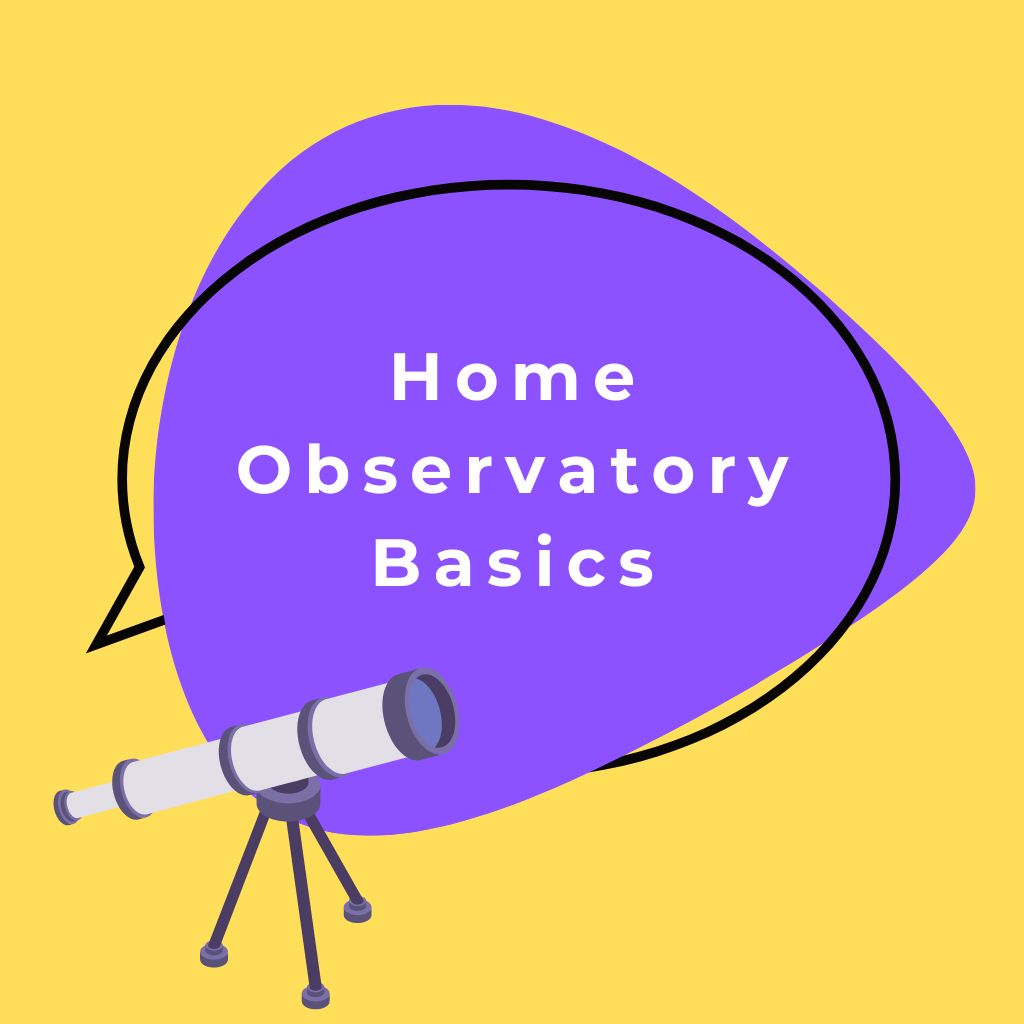This site contains affiliate links to products. I may receive a commission for purchases made through these links.
Ever gazed up at the night sky and wished you could bring those twinkling stars a little closer? Well, with a home observatory, that’s exactly what you’ll do. It’s not as daunting as it sounds, and I’m here to guide you through the basics.
Setting up your own home observatory can be a rewarding endeavor. It’ll not only fuel your passion for astronomy but also provide a unique way to spend your evenings. Whether you’re a seasoned stargazer or a budding astronomer, this guide is just what you need to get started.
In this article, we’ll explore the essentials of a home observatory. From choosing the right location and equipment to understanding the basic operation, I’ve got you covered. So, let’s embark on this exciting journey together and bring the universe right into your backyard.
Choosing the Right Location
Finding the perfect spot for your home observatory is crucial. It’s not as basic as setting up your equipment in the backyard. There’s more to consider.
Light pollution is the nemesis of stargazing. Areas with less artificial light are the best spots for an observatory. It’s why professional observatories are in remote locations. But don’t worry. Even in cities, strategic planning can locate spots with less light interference.
Your observatory site should have clear and unobstructed views of the sky. Make sure there are no tall trees or buildings hindering the view. Roof tops may seem ideal but consider the structural stability and ease of access.
Next, consider the direction. The site should face south for the most comprehensive view of the cosmos. Don’t forget that some stargazing targets are better seen at certain times of the year. A field of view towards the east and west unlocks more celestial wonders.
Living in the Northern Hemisphere? Prioritize sites with clear views of the southern sky. Conversely, it’s the northern sky for those in the Southern Hemisphere.
Lastly, security and comfort shouldn’t be overlooked. The site should be safe and convenient to use even late at night. The closer to home, the better.
Remember, a decent observatory location can turn a stargazing hobby into a lifelong passion. It all starts with Choosing the Right Location. Explore different options and weigh each one against your specific needs. After all, it’s more about personal comfort and preference than anything else.
As I venture into the realm of nighttime wonders, I’m met with insights about myself and the universe. The ripple of starlight against the dark sky is a steady reminder of our existence in this vast cosmic landscape. The tranquility offered by a home observatory is a unique experience, providing a refreshing perspective of our place in the universe.
Keep your eyes on the stars and your feet on the ground. Let’s move on to choosing the right equipment for your eye on the sky.
Selecting the Equipment
Once you’ve secured the perfect spot for your home observatory, it’s time to talk about the heart of your stargazing venture: the equipment. Choosing the right telescope is crucial in transforming a routine observation into an awe-inspiring celestial journey.
The main types of telescopes used for stargazing include Refractor, Reflector, and Cassegrain. Each type has its unique features and advantages:
- Refractor Telescopes utilize lenses, providing high contrast views ideal for viewing details on the moon and planets.
- Reflector Telescopes use mirrors, allowing for both planetary and deep sky observation.
- Cassegrain Telescopes offer a mix of lenses and mirrors, rendering them versatile and easily transportable due to their compact design.
No single type of telescope is superior to all others. Hence, your choice should be guided by your specific viewing interests, budget, and portability requirements. For an in-depth comparison, consider the following table:
| Telescopes | Ideal for | Price Range |
|---|---|---|
| Refractor | Moon and Planets | $100 – $500 |
| Reflector | Deep Sky | $200 – $800 |
| Cassegrain | Versatile | $300 – $1000 |
Alongside your telescope, another indispensable piece of equipment is the mount. An equatorial mount tracks the sky’s motion, vastly simplifying the process of tracking celestial bodies as they traverse the night sky. On the other hand, an alt-azimuth mount is a more straightforward, budget-friendly option.
Lastly, do not underestimate the value of additional accessories like eyepieces, star charts, binoculars, and red LED flashlights. A complete setup will enrich your viewing experience and take your stargazing adventure to soaring heights.
Basic Operation of a Home Observatory
Once you’ve picked the perfect location and amassed all your stargazing gear, it’s time to dive into the basics of operating a home observatory. Operating your observatory involves capturing stunning views of the night sky. You also must maintain your valuable equipment.
First up, aligning your telescope is arguably the most important step. Equatorial mounts – which you should be using – work best when aligned with the North or South Pole. I’d recommend getting a mount with an in-built polar scope; it’ll simplify the alignment process. Trust me, accurately aligned, your telescope can open up a whole new cosmos for your exploration.
Next, you’ll need to calibrate your finderscope. It’s a small wide-field telescope mounted atop your primary telescope. Always ensure it’s accurately aligned with your main telescope, so you can find objects easier. Many a time, beginners miss out on this crucial step and end up spending fruitless hours searching for celestial objects.
Once you’re all squared away with aligning equipment, you’ll want to get acquainted with star maps or charts. Star charts guide you to observe specific celestial objects and constellations. Remember, the stars shift with the seasons, so it’s essential to use an up-to-date star chart.
Lastly, don’t forget to use a red LED flashlight when working with your star charts. The red light won’t impact your night vision, letting you continue stargazing without any hindrance.
But it’s not always about star-spotting. Maintaining your equipment – cleaning your lenses, ensuring the mount is rust-free – is equally important. Regular dusting and keeping the gear away from harsh weather conditions will prolong its life; after all, your telescope and its accessories are hearty investments.
Finally, remember observation logs. I can’t stress enough the importance of documenting each stargazing session. It’s incredible to reflect back on your older notes and see your astronomical progress. On a tough day, your observation logs can be the motivation to keep going.
Setting Up Your Home Observatory
Let’s dive right into the details. Choosing the right location for your home observatory is paramount. If it’s possible, aim for a place with less outdoor lighting interference. Light pollution can seriously hinder your observation capabilities. Now, let’s say you’ve found the perfect spot. Clear views from East to West are important. But, also consider factors like access to power and your home’s Wi-Fi.
The next step: setting up your telescope. Remember what we talked about earlier – precision in alignment and calibration is vital here. Most telescopes in the market come with a manual. I recommend you follow it; it’ll guide you through setup procedures like focusing and eye-piece installation.
You might wonder, “what’s next?” The Mount! Your choice might come down to either an Alt-Azimuth or an Equatorial Mount. Alt-Azimuth mounts move up, down, left, and right while Equatorial Mounts are angled to the Earth’s rotation. The latter is pricier but it’ll save you a lot of manual adjustment time.
Moving onto the finderscope. Think of it as the Robin to your telescope’s Batman – it’s smaller and helps locate objects before you look through the main lens.
equipment protection can’t be stressed enough. You’ve invested in good quality optical devices. The last thing you’ll want is them getting damaged by moisture or dust. Invest in telescope covers and cases. They’ll repay you in the long run.
Setting up is just the start, my friends. There will be trial and errors, but that’s part of the fun. Keep your observation logs handy. They’ll be your guide, your benchmark, your motivator. The night sky is a vast, captivating canvas. It’s right there, waiting for you to explore.
Maintaining and Upgrading Your Observatory
Just like any other worthy venture, maintaining your home observatory is paramount. Remember, it’s not enough to set up the perfect observatory; you must ensure a consistent performance of your equipment.
Regular checks and cleaning of the telescope and other instruments play a significant role in maintaining your observatory. It’s best to stick to the manufacturer’s guidelines for cleaning your equipment; this way, you’ll avoid damages that might arise from using inappropriate cleaning agents.
Throughout your stargazing experiences, you might develop a need to upgrade your observatory. Perhaps you’ll want a higher resolution or improved focus. In such instances, it’s advisable to research each component thoroughly before making a purchase. Remember, the most expensive equipment doesn’t always offer the best performance. Therefore, you should align your purchases with your goals as an observer.
It goes without saying that the cost of upgrading will vary widely depending on what you’re looking to improve. Let’s have a look at some potential expenses:
| Component | Average Cost (USD) |
|---|---|
| Telescope | 200 – 8000 |
| Mount | 100 – 2000 |
| Eyepieces | 30 – 300 |
You might also want to consider some helpful software for planning observations and processing your findings. Such tools can facilitate sky charting, meteorological tracking, and image processing, to mention a few possibilities. Some popular options include Stellarium, SkySafari, and DeepSkyStacker.
It’s also a good idea to establish relationships with experienced observers who can provide valuable advice. Online forums, local astronomy clubs, or social media groups can be effective platforms. They’ll keep you abreast with the latest developments and discoveries in the field, which will further enrich your observation experience.
Remember that while maintaining and upgrading your observatory demands time, effort, and money, it all contributes to a more fruitful stargazing experience. So, keep exploring, keep improving, and continue finding joy in the mysteries that the night sky has to offer.
Conclusion
So, you’ve learned the ropes of setting up your home observatory. Remember, it’s all about steady maintenance, smart upgrades, and continuous learning. Keep your equipment in top shape and stay open to advancements that could enhance your stargazing experience. Be mindful of potential costs, but don’t let them deter your astronomical ambitions.
Seek advice from seasoned observers and utilize innovative software to stay ahead. Above all, never stop exploring the cosmos from your backyard. Your home observatory is a gateway to the universe. Make the most of it!





